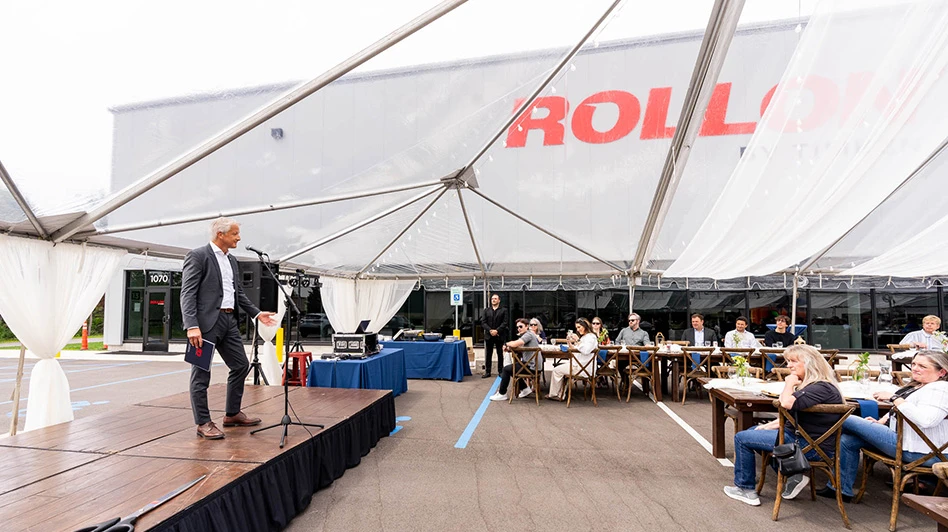 The helical structure of a coil is strong in torsion and tension, yet flexible in bending. These characteristics make coils ideal for navigating the small, delicate passages of the human body. The deflection coiling process has been in use since the early 1900s, producing spring forms of all types. KINECOIL, Division of Kinefac Corp., has honed the process to the micro-scale, allowing medical device manufacturers to coil wire diameters as small as 0.0008" in a variety of materials. This process is not limited to only round wires. Geometries such as flat and D-wires are possible.
The helical structure of a coil is strong in torsion and tension, yet flexible in bending. These characteristics make coils ideal for navigating the small, delicate passages of the human body. The deflection coiling process has been in use since the early 1900s, producing spring forms of all types. KINECOIL, Division of Kinefac Corp., has honed the process to the micro-scale, allowing medical device manufacturers to coil wire diameters as small as 0.0008" in a variety of materials. This process is not limited to only round wires. Geometries such as flat and D-wires are possible.
Stainless steels (304V and MP35N), platinum tungsten, platinum iridium, and palladium materials are most common for medical device coils. Strength and non-galvanic properties makes stainless steel very popular coiling material in the medical world. The radiopacity of heavy metals such as platinum and palladium make them useful as coil marker tips and other locating features that show up well under fluoroscopes.
KINECOIL tackles the challenge of deflection coiling small wires and coils by integrating precision micro-tooling and high-resolution control into one compact system.
Manufacturing practices
 Rotating feed rolls drive the wire through precisely sized wire guides, until it reaches the coiling area. In single-point deflection coiling, the coiling area contains an arbor, coiling point tool, pitch tool, and cutter tool. The arbor acts as the anvil around which the wire is bent to achieve the desired coil size. The coiling point holds the wire against the arbor to create the coil bend radius and controls coil diameter. The pitch tool supports the wire from the rear and can also induce spacing between individual coil turns. The cutter tool shears off formed coils into discreet lengths.
Rotating feed rolls drive the wire through precisely sized wire guides, until it reaches the coiling area. In single-point deflection coiling, the coiling area contains an arbor, coiling point tool, pitch tool, and cutter tool. The arbor acts as the anvil around which the wire is bent to achieve the desired coil size. The coiling point holds the wire against the arbor to create the coil bend radius and controls coil diameter. The pitch tool supports the wire from the rear and can also induce spacing between individual coil turns. The cutter tool shears off formed coils into discreet lengths.
One machine can produce finished, cut-to-length coils, with diameters ranging from 0.008" to 0.100", up to 5m in length, with constant or variable coil diameters and coil pitch spacing. Coils can be formed with wire feed rates from as little as 10ipm to as high as 1,500ipm, depending on coil index and material.
Guidewire delivery systems and catheters are a small subset of medical coil applications to which deflection coiling can be applied. Implantable coils for neurovascular occlusion or aneurysm intervention are also possible, as is utilizing the helical properties of a coil with open pitch spacing to create a small heart screw for a pacemaker lead.
KINECOIL, Division of Kinefac Corp.
www.microcoiler.com/tmd.html
About the author: David C. Willens, research and process development mechanical engineer at KINECOIL, Division of Kinefac Corp., can be reached at kinecoil@kinefac.com or 508.754.6891.

Explore the October 2015 Issue
Check out more from this issue and find your next story to read.
Latest from Today's Medical Developments
- Meet the minds shaping CNC grinding at The Precision Summit
- Mitutoyo unveils innovative SurfaceMeasure-S Series sensors
- #69 Manufacturing Matters - Shopfloor Connectivity Roundtable with Renishaw and SMW Autoblok
- Veeva's impact on compliance and efficiency in medtech
- Demystifying Controlled Unclassified Information (CUI)
- Streamline design with Festo's engineering tools
- Simplify your shop floor operations while ensuring quality parts
- Happy Independence Day - July 4th





